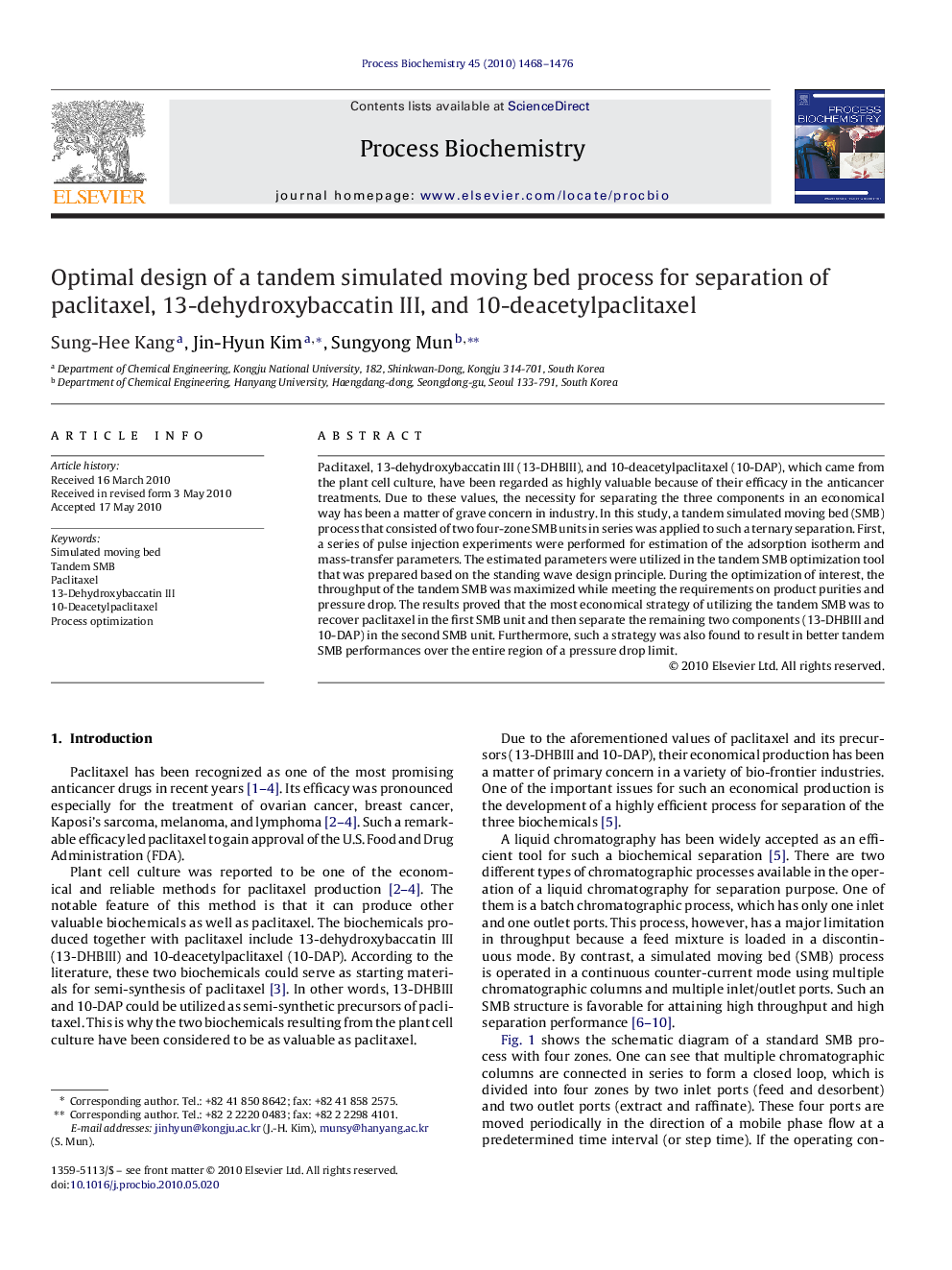| Article ID | Journal | Published Year | Pages | File Type |
|---|---|---|---|---|
| 34966 | Process Biochemistry | 2010 | 9 Pages |
Paclitaxel, 13-dehydroxybaccatin III (13-DHBIII), and 10-deacetylpaclitaxel (10-DAP), which came from the plant cell culture, have been regarded as highly valuable because of their efficacy in the anticancer treatments. Due to these values, the necessity for separating the three components in an economical way has been a matter of grave concern in industry. In this study, a tandem simulated moving bed (SMB) process that consisted of two four-zone SMB units in series was applied to such a ternary separation. First, a series of pulse injection experiments were performed for estimation of the adsorption isotherm and mass-transfer parameters. The estimated parameters were utilized in the tandem SMB optimization tool that was prepared based on the standing wave design principle. During the optimization of interest, the throughput of the tandem SMB was maximized while meeting the requirements on product purities and pressure drop. The results proved that the most economical strategy of utilizing the tandem SMB was to recover paclitaxel in the first SMB unit and then separate the remaining two components (13-DHBIII and 10-DAP) in the second SMB unit. Furthermore, such a strategy was also found to result in better tandem SMB performances over the entire region of a pressure drop limit.
